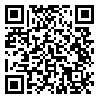Volume 24, Issue 3 (Fall 2020)
jwss 2020, 24(3): 17-32 |
Back to browse issues page
Download citation:
BibTeX | RIS | EndNote | Medlars | ProCite | Reference Manager | RefWorks
Send citation to:



BibTeX | RIS | EndNote | Medlars | ProCite | Reference Manager | RefWorks
Send citation to:
Jalili J, Radmanesh F, Naseri A A, Akhond Ali M A, Zarei H A. Estimation of Sugar Cane Evapotranspiration using SEBAL and SEBS Algorithms and Priestly-Taylor Method (Case Study of Amir Kabir Cultivation and Industry). jwss 2020; 24 (3) :17-32
URL: http://jstnar.iut.ac.ir/article-1-3932-en.html
URL: http://jstnar.iut.ac.ir/article-1-3932-en.html
1- Water Resource Management, Shahid Chamran University of Ahvaz, Ahvaz, Iran. , feridon.radmanesh@yahoo.com
Abstract: (4734 Views)
Agricultural water management studies require accurate information on actual evapotranspiration. This information must have sufficient spatial detail to allow analysis on the farm or basin level. The methods used to estimate evapotranspiration are grouped into two main groups, which include direct methods and indirect or computational methods. Basics of the indirect methods are based on the relationship between meteorological parameters, which impedes the use of these data with a lack or impairment. On the other hand, this information is a point specific to meteorological stations, and their regional estimates are another problem of uncertainty of their own. To this end, the use of remote sensing technology can be a suitable approach to address these constraints. Real evapotranspiration can be estimated by satellite imagery that has short and long wavelengths and is estimated using surface energy equations. Examples of such algorithms include SEBAL, METRIC, SEBS. Among the above mentioned algorithms, SEBAL and SEBS have been used. Among the factors of superiority of the SEBAL and SEBS algorithms, in comparison with other remote sensing algorithms, is a satellite imagery analysis algorithm based on physical principles and uses satellite simulation and requires minimum meteorological information from ground measurements or air models.
| Rights and permissions | |
 |
This work is licensed under a Creative Commons Attribution-NonCommercial 4.0 International License. |






